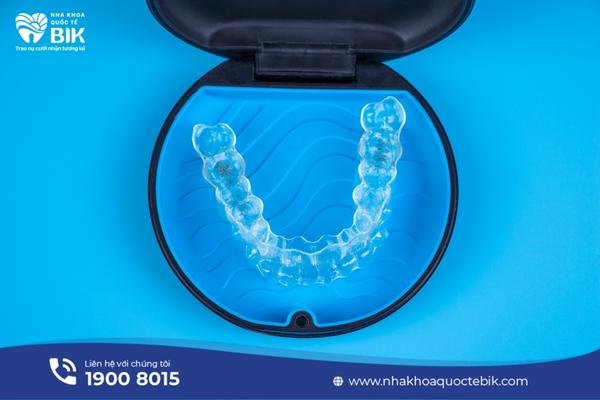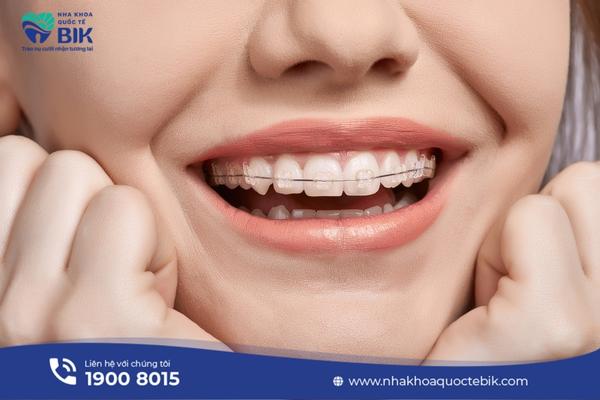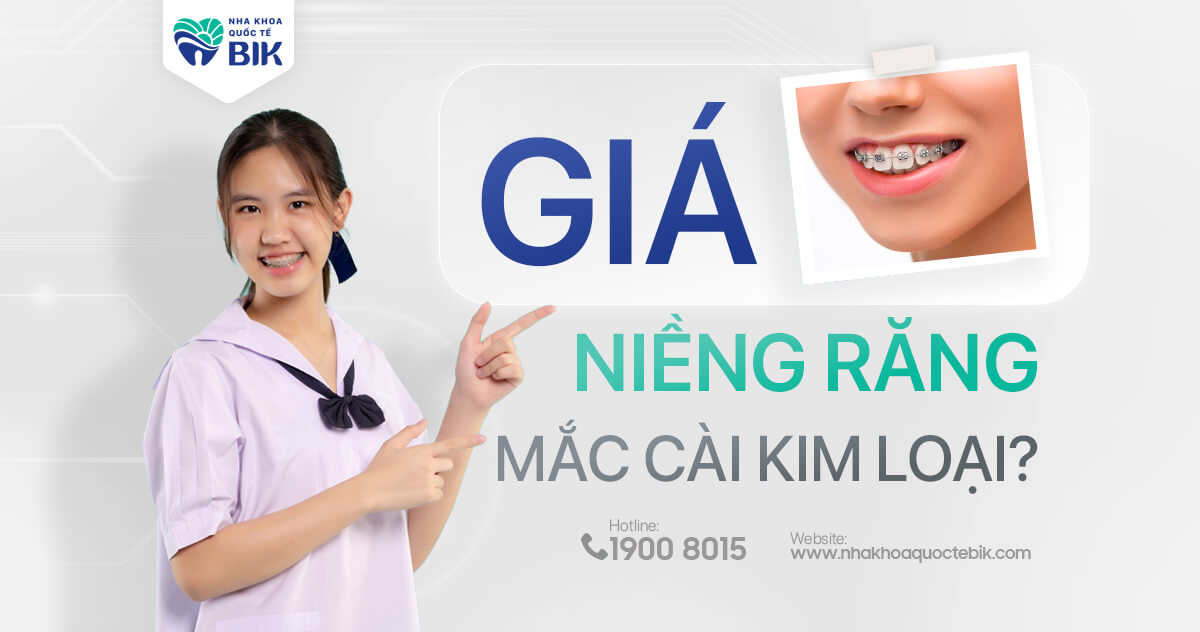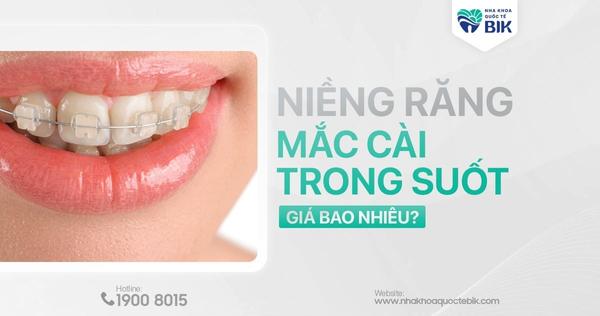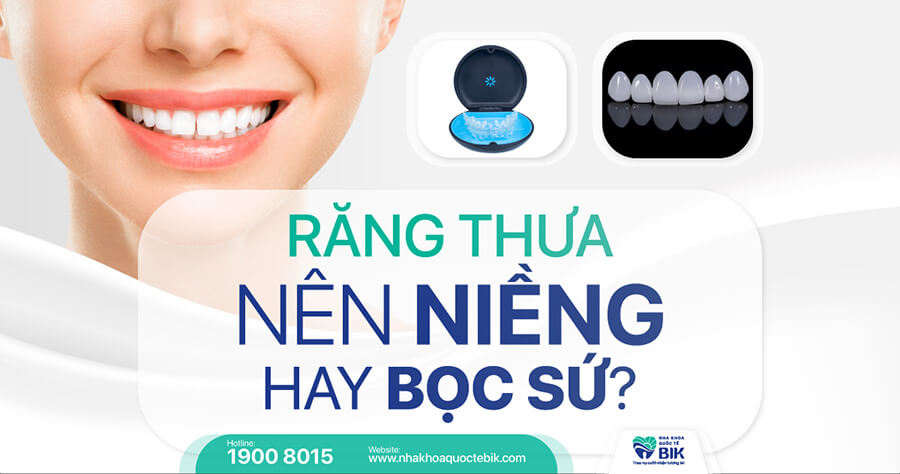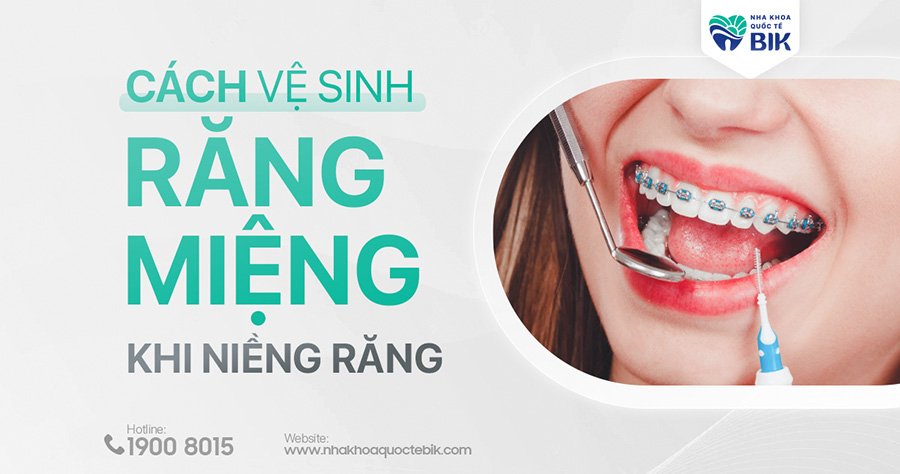Protruding teeth are a defect that causes facial imbalance, affecting the aesthetics and function of chewing. Protruding teeth can be divided into two main types: protruding teeth and protruding jaws. How to distinguish between protruding teeth and protruding jaws. Can braces fix protruding teeth? That is a question that many people are interested in. Read the article below by BIK International Dental Clinic to find out the answer.
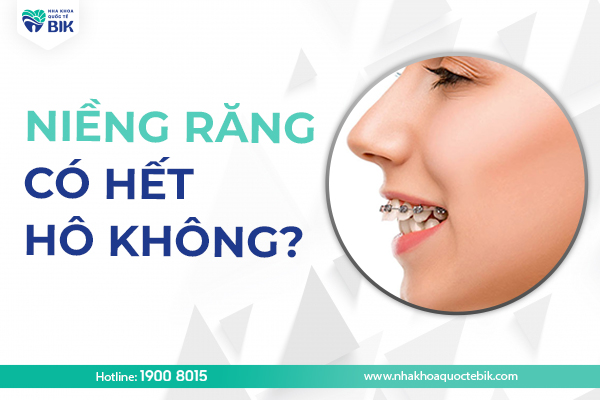
Causes of buck teeth
According to experts, there are 3 main causes of buck teeth:
- Jaw buck teeth: When teeth grow normally but the upper jaw structure develops too large compared to the lower jaw, causing the teeth to protrude.
- Teeth buck teeth: When the size of the teeth is too large, there is not enough room to grow, causing the teeth to protrude. Or due to childhood habits such as sucking fingers, sucking on pacifiers for a long time. Baby teeth fall out early and are not adjusted in time, causing permanent teeth to grow in the wrong position.
- Protruding teeth due to both jaw structure and teeth: This case is the most serious when both jaw structure and teeth grow in the wrong position.
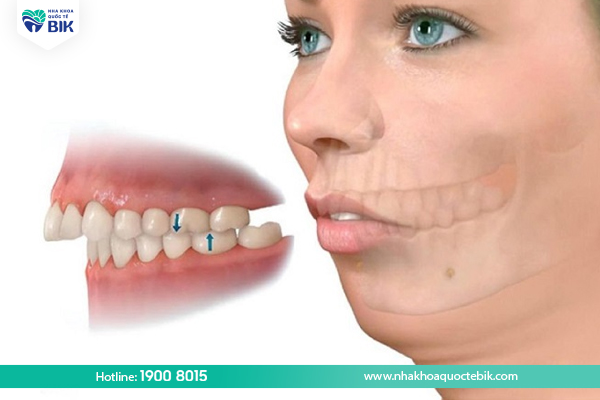
Habits that can cause protruding teeth:
- Children who drink from bottles or use pacifiers frequently can cause teeth to grow forward, causing protruding teeth due to the jaw or teeth.
- The habit of sucking fingers or pushing the tongue can create pressure that causes newly grown teeth to protrude out of the jaw. much.
- Mouth breathing is a bad habit that can squeeze the two muscles in the cheeks, narrowing the jaw. This can lead to the jaw protruding forward, causing uneven facial bone development and causing bite disorders.

How do buck teeth affect?
Buck teeth will affect your daily life:
Imbalance in facial structure
Teeth that protrude too much make the face unbalanced, and also affect the beauty of the smile. Protruding teeth are also considered one of the main causes of gummy smiles. Causing a loss of confidence in communication.
Affects chewing function
Protruding teeth make it difficult to eat and take care of oral hygiene, leading to oral health problems such as tooth decay, gingivitis, periodontitis, etc.
Affects systemic diseases
Protruding teeth make it difficult to chew food, increasing the risk of problems such as jaw misalignment, jaw muscle pain, etc. In addition, food that is not thoroughly ground can lead to digestive problems such as stomach pain, indigestion, etc.
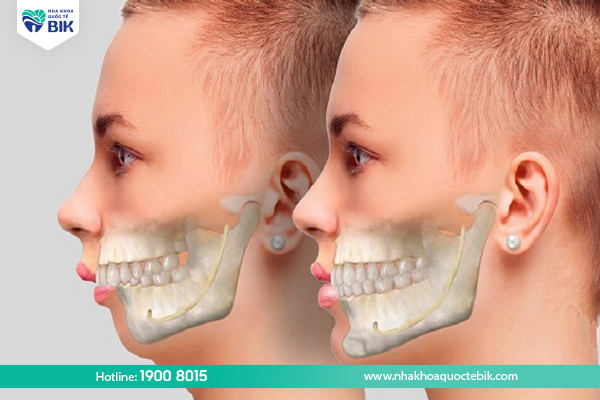
Can braces fix buck teeth?
Brace methods are effective for cases of buck teeth caused by the upper jaw teeth growing outward. Orthodontic appliances including braces, archwires, elastic bands… or clear trays will apply force to pull the teeth back to the correct position. After removing the braces, the teeth on both jaws will grow more evenly and properly.
After about 12 – 24 months of wearing braces, the buck teeth will be completely corrected. For severe buck teeth, the treatment time may be longer.
However, for cases of protruding teeth due to jaw bone structure, braces are not effective. Because orthodontic devices can only affect the teeth and cannot change the bone structure. Therefore, in this case, jaw surgery may be the most effective method to treat protruding teeth.
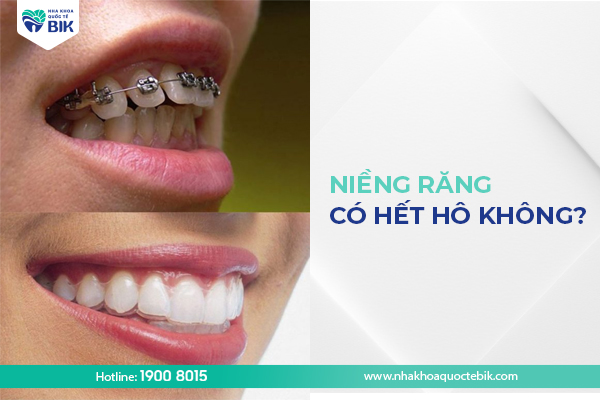
What age is best for braces for protruding teeth?
The best time to start correcting protruding teeth is between the ages of 11 and 16. Early treatment will be more effective and the time to straighten teeth will be faster when you are older. However, you can completely have braces for protruding teeth when you are an adult. It’s never too late to change your life for the better with a smile! So never delay your intention to get braces.
Effective methods of braces for buck teeth
If you are looking for the most effective and suitable method of braces for buck teeth, don’t miss the information below!
Metal braces
Braces with metal brackets are a traditional method that has been used for a long time and is still highly appreciated for its effectiveness. This method can effectively solve problems such as buck teeth, crooked teeth, and mild to severe crooked teeth.
Metal brackets are attached to the teeth, and an archwire is tied to each bracket to maintain pulling pressure. This archwire is highly elastic, helping the braces process to take place continuously and effectively.
Currently, there are 2 popular types of metal braces:
- Regular braces: Use elastic bands to secure the archwire to each bracket for each tooth.
- Self-ligating braces: Have a sliding cover to hold the archwire and bracket. The archwire can slide freely to reduce friction and shorten the time of braces.
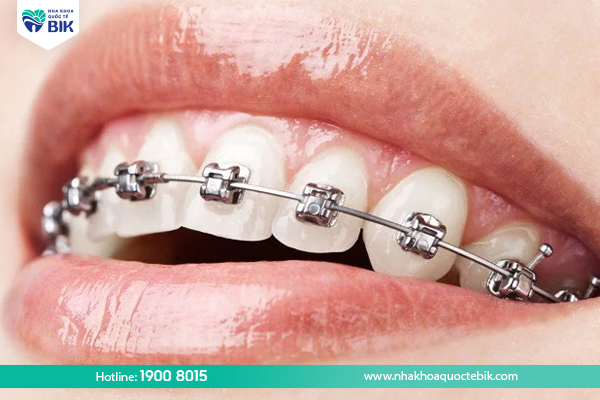
Ceramic braces
Braces with ceramic brackets are similar to braces with metal brackets. However, the difference is that ceramic braces are made from higher quality materials. The color of ceramic braces matches the color of the teeth, creating a high aesthetic effect. There are two types of ceramic braces: conventional ceramic braces and automatic ceramic braces like metal braces.
Advantages of ceramic braces: Higher aesthetics compared to other methods. In addition, the force of the braces on the teeth is stable, the treatment time is fast and effective. With pure ceramic material, ceramic braces do not cause irritation to the body, do not cause discomfort and pain when used.
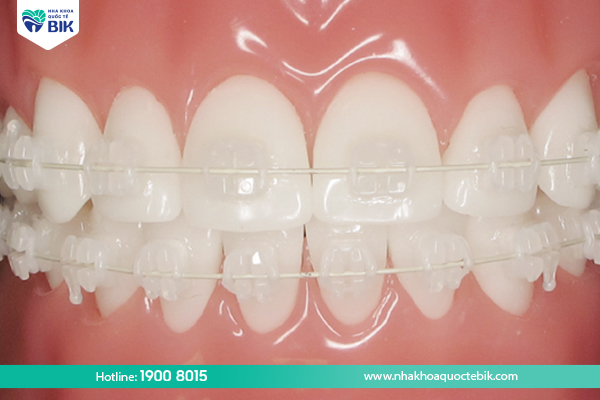
Linguinal braces
Linguinal braces are a method of placing braces on the inner surface of the teeth. This is considered an advancement in the field of orthodontics because it not only helps to adjust the teeth but also keeps the teeth more beautiful.
One of the advantages of lingual braces is high aesthetics because no one can know you are wearing braces. This method is also effective in many cases.
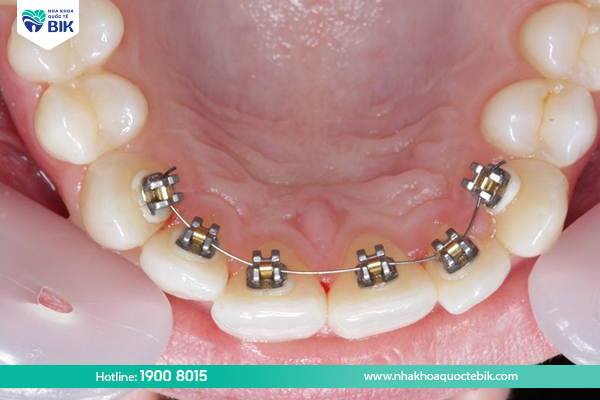
Invisalign clear braces
Invisalign clear braces are considered the most modern method and originate from the United States. Each person will change between 20 to 48 separate and unique braces. After about 2 months/time, you will need to go to the dentist to check the speed of tooth movement.
Advantages of Invisalign clear braces
Of all methods, Invisalign braces are highly appreciated in terms of aesthetics because clear braces will not show the braces. In addition, the braces are designed to fit tightly around each tooth, so the tooth adjustment effect is also very high. You don’t have to worry about the brackets or wires coming loose, and they don’t cause damage to your mouth or gums. They can be easily removed for cleaning and eating.
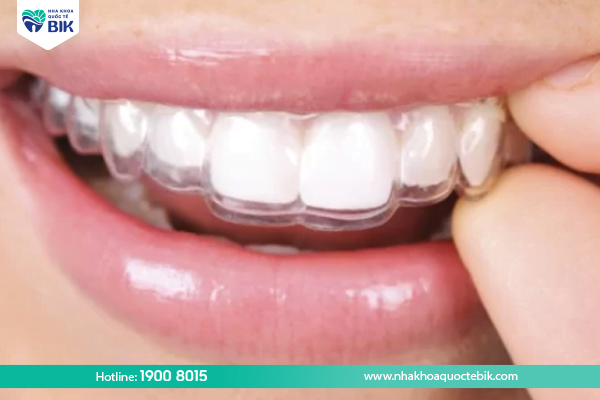
Standard medical braces procedure for buck teeth – BIK International Dental Clinic
Each customer receiving braces at BIK International Dental Clinic will have a personalized treatment plan based on their own condition. The basic buck teeth braces procedure will include the following steps:
Step 1: Examine and evaluate the condition of the mouth, take X-rays to collect information about the teeth and jawbone.
Step 2: Build a treatment plan based on the data from step 1, the doctor will analyze your orthodontic condition and wishes to create a personalized regimen.
Step 3: After agreeing on the treatment plan and cost, your teeth will be cleaned and braces will be attached. For invisalign, the doctor will send the clincheck plan to Align technology (USA) to print the tray, then instruct you on how to use the tray when you receive it after about 2 weeks.
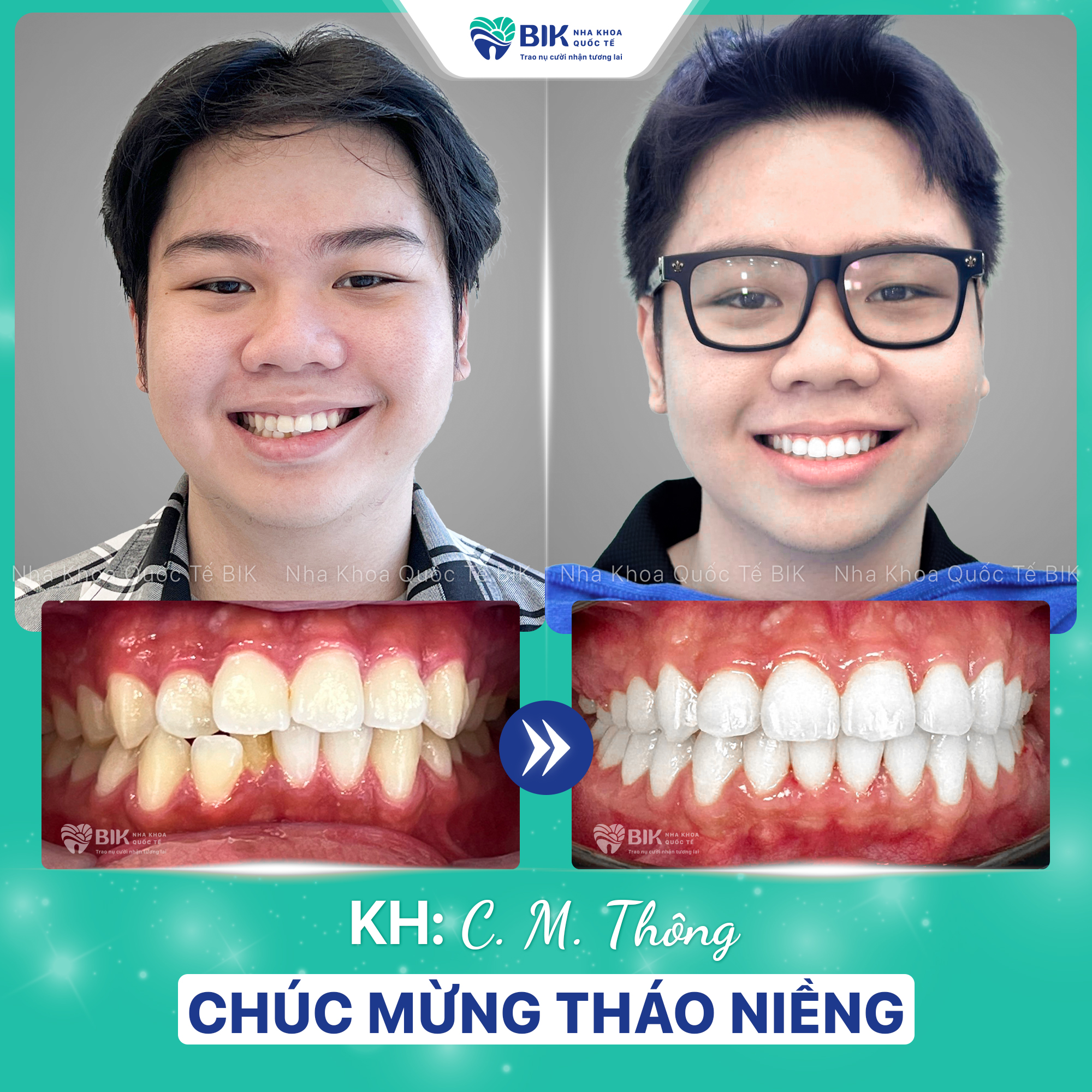
Step 4: Regular check-ups, teeth tightening and possibly additional orthodontic support (as informed by the doctor from the planning step). The re-examination time for braces is about 1 month, for invisalign is from 2 – 3 months.
Step 5: After 2 – 3 years of treatment, when the smile is even and beautiful, the doctor will remove the braces, take an impression to make a retainer. About 6 months after the end of treatment, you will be scheduled for regular check-ups and check the condition after braces removal.
This is all the information and process of braces to fix buck teeth that we share. To ensure that buck teeth do not recur, please follow the instructions of your doctor to wear a retainer and take care of your teeth.

